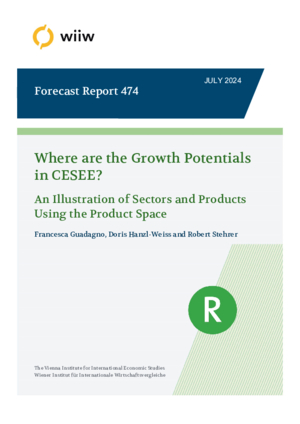Where are the Growth Potentials in CESEE? An Illustration of Sectors and Products Using the Product Space
Francesca Guadagno, Doris Hanzl-Weiss and Robert Stehrer
wiiw Research Report No. 474, July 2024
64 pages including 22 Tables and 20 Figures
This paper investigates the sectoral and export structures as well as the product spaces of 11 economies in Central, East and Southeast Europe (CESEE). We first employ an analysis based on revealed comparative advantages (RCAs) to identify promising sectors for future growth and then combine this analysis with a product space approach to detect related and complex products that could help these economies diversify and upgrade. The RCA analysis shows that the CESEE countries still hold a comparative advantage in manufacturing, although a slightly negative trend emerged between 2013 and 2020. Meanwhile, some services – particularly computer programming, consultancy and information service activities – have emerged as the most successful sectors to date. The product space analysis indicates that for the majority of the CESEE economies, it is possible to identify relatively complex products that could be easily targeted to spur upgrading. We also find that while we run the analysis separately for each of the 11 CESEE countries, the identified opportunities are often the same. While this is intuitively explained by the similar specialisations of these 11 countries, from a policy perspective this finding implies that each country has to deploy a battery of indicators to identify profitable and realistic niches within these broadly defined product categories.
Keywords: sectoral analysis, RCA-analysis, product space, CESEE, complexity analysis
JEL classification: F14
Countries covered: New EU Member States
Research Areas: International Trade, Competitiveness and FDI
